Project 667B nuclear missile attack submarines
 Project 667BD Murena-M: 4 ballistic submarines (Delta II).
Project 667BD Murena-M: 4 ballistic submarines (Delta II).
Soviet Cold War Subs
Pr.613 Whiskey | Pr.611 Zulu | Pr.615 Quebec | Pr.633 Romeo | Pr.651 Juliet | Pr.641 Foxtrot | Pr.641 buki Tango | Pr.877 KiloPr.627 kit November | Pr.659 Echo I | Pr.675 Echo II | Pr.671 Victor I | Pr.671RT Victor II | Pr.671RTMK Victor III | Pr.670/670M skat Charlie | Pr.705 lira Alfa | Pr.949 antey Oscar | Pr.945 Sierra | Pr.971 bars Akula | Pr.885 graney Yasen | Pr. 545 Laika
Pr.629 Golf | Pr.658 Hotel | Pr.667A Yankee | Pr.667B Murena Delta I | Pr.667D Delta II | Pr.667BDR Kalmar Delta III | Pr.667 BDMR delfin Delta IV | Pr. 941 akula Typhoon | Pr.995 borei Dolgorukiy | Pr.09851 Khabarovsk
With just four boats, the 667BD Murena-M (NATO Delta II) were an evolution of the Delta I nuclear-powered ballistic missile submarines. They were essentially correcting shortcomings with the Delta I design, and while remaining largely the same overall, a new section was added between the fourth and fifth compartments. It was adding an extra 16 meters (52 ft) for four more missile tubes. But their hull also received additional quieting measures (steam turbines on shock absorbers, pipes and hydraulics clear from the hull in rubber insulation, special hydroacoustic coating. If only four were built between 1964 and 1974, it’s because the naval command wanted to jump directly at the more promising 667BDR Kalmar (Delta III) and they were out of service by 1996. The latter were also designed to replace the earlier Yankee class boats.
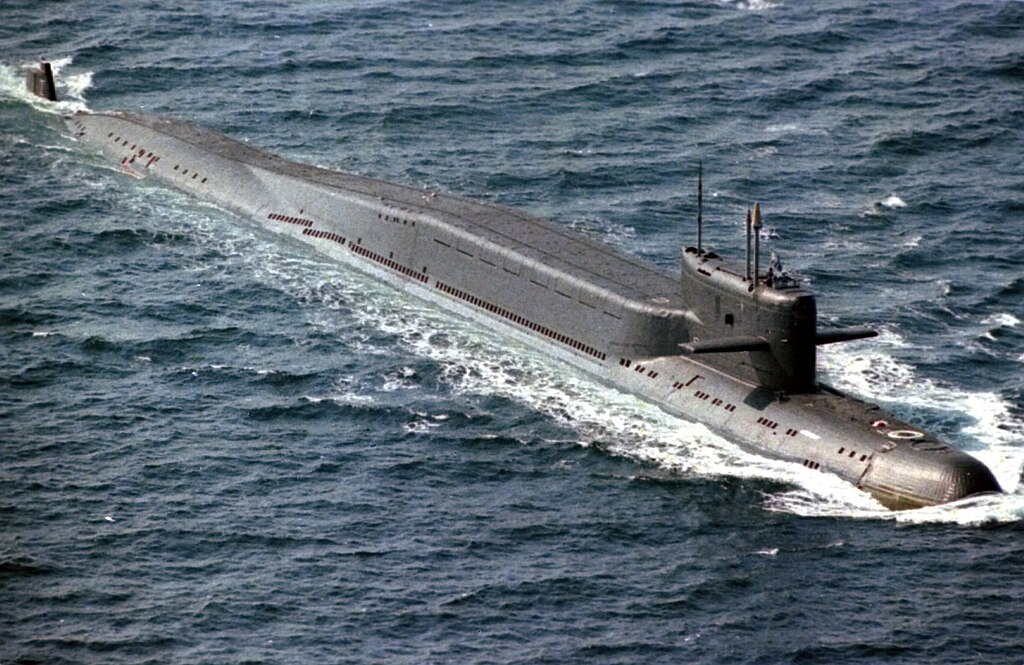
Development
Project 667BD “Murena-M” Soviet SSBNs were to be equipped with the D-9D complex (missile tubes and FC system) with 16 R-29D ballistic missiles on board as a further development of project 667B (NATO DELTA I). The main difference was that they carried 16 missiles versus 12 on Project 667B and to accommodate these, an additional 16 m long section was added to the exact same hull, for four more tubes. However some systems were improved: The steam turbine unit was placed on a vibration-absorbing foundation to reduce noise, the design of the bow rudders was changed to improve navigation conditions under ice and the new combat information and control system “Almaz” was installed. Also, the main power plant saw its output increased from 52,000 up to 55,000 hp.
Also, an electrochemical air regeneration system (ERV-M) was used for the first time. It obtained oxygen through water electrolysis while absorbing carbon dioxide through a solid regenerable absorber.
They also carried improved R-29D missiles with greater range (9,100 km) and accuracy (900 m) compared to R-29 missiles. The fire control system did not undergone major changes, and the missiles were still launched in two salvos of eight missiles.
The project was initially developed as an improvement at Rubin Central Design Bureau under general designer S. N. Kovalev. By 1999, they all left service to be scrapped in 2000, replaced by more capable Delta III-IV and Typhoon.
Design of the class

1 — main antennas of the State Joint Stock Company “Kerch”; 2 — tank for bubble-free torpedo firing; 3 – 533 mm TA; 4 – annular gap tank; 5 — torpedo replacement tank; 6 — bow hatch; 7 — bow emergency buoy; 8 — spare 533 mm torpedoes; 9 — torpedo loading hatch; 10 — bow (torpedo) compartment; 11 — nasal group AB; 12 – hydrodynamic log; 13 — Central City Hospital; 14 — capstan and capstan machine; 15 — VVD cylinders; 16 – second (living) compartment; 17 – aft group AB; 18 – closed navigation bridge; 19 – gyrocompass repeater; 20 – periscope of the MT-70-8 system; 21 – periscope PZNG-8; 22 – conning tower; 23 – third (central) compartment; 24 – central post; 25 — periscope of the “Volna” astrocorrector; 26 — radio sextant “Saiga”; 27 — direction finder antenna “Zavesa”; 28 — radar antenna; 29 — RDP; 30 — SORS “Zaliv-P” antenna; 31 — fourth (bow missile) compartment; 32 — missile silo; 33 – fifth (aft missile) compartment; 34 cabin of emergency fuel drain pumps; 35 — VVABT “Paravan” and its winch; 36 — sixth (auxiliary mechanisms) compartment; 37 — diesel fuel tanks; 38 – seventh (reactor) compartment; 39 – reactor; 40 — steam generator; 41 – heat exchange block; 42 — receiver cylinders; 43 — eighth (bow turbine) compartment; 44 — steam turbine; 45 – capacitor; 46 — elastic coupling; 47 – planetary gearbox; 48 — main thrust bearing (GUP); 49 — oil cooler; 50 — ninth (aft turbine) compartment; 51 condenser electric pumps; 52 — autonomous turbogenerator (ATG); 53 — pop-up camera (VSK); 54 — aft hatch; 55 — rowing ED (GED); 56 — elastic coupling; 57 – tenth (aft) compartment; 58 — stern emergency buoy; 59 — stern rudder drives
Northern Engineering bureay designed the hull extension module and procedure of the Project 667 family under construction. It allowed to maintain existing technology, the idea being just to add a module to hulls already in construction, improving their performance overall. In June 1972, the Rubin Central Design Bureau was issued a tactical and technical assignment (TTZ) for Project 667B carrying 16 RSM-40 missiles. That was the basic sheet requirement. The code “667BD Murena-M” was applied. These modernized ships (hence the “M”) were to be built according to the previous project, maintaining all components and equipment, as the Yard had a large production reserve for Project 667B Murena boats.
This led to minimum of structural changes and a quick modification streak. To accommodate the extra missiles a new section of 4-5 frames was to be manufactured and “embedded” over 16 m long after having the hull interrupted and split apart to receive these while in construction, while the rest of the structure was all the same. The number of waterproof compartments thus went from 10 to 11 with the 5-bis missile compartment added and final displacement increased by 1,500 tons, speed decreased by 1 knot.
Compartments were the following: 1st torpedo room (with spare torpedoes and fast loading system), 2nd battery and residential (officers’ cabins), 3rd central post, 4th and 5th missile rooms, 5th was residential, 6th was the diesel generator, 7th was the reactor, 8th and 9th the turbine, 10th the electric motor compartment. As a result, the ship’s displacement increased by 1,500 tons, and the speed decreased by 1 knot.

Hull and general design
However Rubin proposed to improved the design nevertheless, and pushed things forward without too much hassle. A set of measures was implemented to further reduce noise and interference with the onboard sonar systems. These were two key issues noted on the Delta I, which needed to be addressed. In particular, the steam turbine plants were mounted on special vibration-absorbing foundations equipped with a two-stage shock absorption system. There was a new sound-absorbing and vibration-damping coating installed. Pipes and hydraulic systems were all clearly separated from the pressure hull in vibration isolation material.
The increase in range led to a shift in the combat patrol areas to the Arctic regions. As a result, it was necessary to take additional measures to improve navigation under ice. The bow horizontal rudders were rotating to facilitate ascent in ice holes, turning at 90°. The submarine received an automated ship-wide television system provides ice surveillance as well as intra-compartment surveillance, visualization of the spatial position and fliming the near-surface/air conditions based on periscope data, all displayed on screens installed in the main command post.
There was as new system for electrochemical air regeneration (ERV-M) used for the first time by electrolysis of water (to produce oxygen) and absorption of carbon dioxide, by a solid regenerable absorber. More advanced technical means were introduced to maintain the specified habitability standards on board the ship.
Powerplant
Exact same powerplant as on Delta I, which power was increased. It included two VM-4B pressurized water reactors and two OK-700 steam turbines, coupled with GTZA-635 turbo-gear units working like creeping engine, noise-free. There were also redundancy with two DG-460 diesel generators, two more economical electric motors rated for 260 hp each. There were already sound-damping measure originally, such as in the two-stage steam turbine, more advanced compered to the Yankee class.
The Tobol-B navigation complex was kept but the Cyclone-B space navigation system was replmaced by a better system better adapted to Arctic conditions.
The new autonomous shipborne digital computer system to control missiles, calculating their trajectories was fast and used weather conditions for a quick launching sequence for a single salvo underwater. It was improved on the Delta II, see below. The power was increased but speed lost one knot underwater.
Armament

R-29D SLBMs (SS-N-8 Mod 2 Sawfly)
The new improved R29D missile had a Range increased to 9,100 km and accuracy improved down to 900 m.
Instead of the “Tucha” combat information and control system, a slightly more advanced “Almaz” BIUS was installed on the ship.
Like the previous R-29, its second stage engine was recessed into the first stage oxidizer tank, creating a very compact design.
-The onboard control was based on a digital computer and assisted by an advanced inertial missile control system with auto-correction, based on star position (accuracy was impmroved from 1,500 m to 900 m). There were also Light decoys inside cylindrical containers welded into the second stage which could be launched to defeat a intercepting missile. It was manufactured at the Krasnoyarsk Machine-Building Plant.
533/400 mm TTs
The armament was the exact same as the Delta I: In the bow four 533-mm torpedo tubes with 12 torpedoes in reserve, plus two smaller 400-mm torpedo tubes for the MG-44 decoy system.
The base torpedo could operate and be fired under 100 meters, the two bow 400 mm tubes under 250 m. The torpedo tubes had fast loading and wire-guidance systems. The 21 inches initial model were SET 53M torpedoes, Heavyweight torpedo which entered service in 1964. They used a silver-zinc battery and running gear with reduced noise, with much longer range and higher speed.
The final adopted model was likely (unless reserved for SSNs) the 53-61M which entered service in 1969.
They were Acoustic wake following homing torpedo, based upon the 53-57 while the “M” has an improved homing system. Their engine was instable and dangerous however, using a Kerosene-Hydrogen Peroxide Turbine but enable a hit 15 km away at 55 knots (100 kph). They were the fastest before the introduction of cavitation model such as the Shkval.
Sensors

Here again, some similar systems were used to gain time in design. See Delta I for more.
-MRK-50 Kaskad radar
-MGK-100 Kerch’ sonar
-MRP-10M Zaliv-P ECM suite
-Almaz-BD CCS (in place of MVU-100 Tucha)
-MG-44 Korund-1 decoys
Project 667BD had the combat information and control system “Almaz” to control torpedoes, processing target data from the sonars, and pre-launch vectoring and “Alpha” Missile system main operating system.
⚙ specifications |
|
| Displacement | Surfaced: 9,350 tons, Submerged: 10,500 tons |
| Dimensions | 155 x 12 x 9m (508 ft 6 in x 39 ft 4 in x 29 ft 6 in) |
| Propulsion | 2 pr. WC reactors, 2 steam turbines 41 MW (55,000 shp) |
| Speed | Surfaced 12 knots (22 km/h; 14 mph), submerged 24 knots (44 km/h; 28 mph) |
| Range | Unlimited, except by food supplies |
| Armament | 16x R-29D SLBMs in D9D Tubes, 4× 533 mm TTs, 2× 400 mm TTs |
| Sensors | MRK-50 Kaskad radar, MGK-100 Kerch sonar, MRP-10M Zaliv-P ECM suite, MG-44 Korund-1 decoys, Almaz-BD CCS |
| Crew | 130 |
General Assessment
Since the fire control system remained virtually unchanged, the Delta II kept their two salvoes procedure, with a main launcung sequence for 12 missiles and an additional sequence for the remaining four missiles, increased vulnerability however ast it revealed its location to the enemy after the first salvo. That’s why they were not kept that long into service.
It was decided to build these in Severodvinsk,northern fleet main shipyard, and after the 667BD Delta II, all domestic SSBNs were laid only there. The serie was limited to just four since there was to be a serie of new SSBNs using the larger, longer range RSM-50 ICBM, which was already testing. During construction, new methods of design and installation started to be introduced, which were further developed during the construction of 3rd generation nuclear-powered SSBNs. LPMB Rubin headed by I.D. Spassky teamed with the Kaluga Turbine Plant and other enterprises and scientific centers to make great contributions for Soviet underwater shipbuilding.
All four SSBNs formed the 3rd submarine flotilla based in Yagelnaya Bay. They soon received the NATO classification Delta-II.
The appearance of these SSBNs with the D-9D enabled to increase the portiong of their their patrol areas under control of Soviet air defense and ASW screen, closer to the shores, increasing the combat suvivability as they could fire their missiles
In accordance with the Russian-American agreements on the reduction of strategic weapons, the first SSBN of Project 667BD was withdrawn from the fleet in 1996. By 1999, all ships of this project had left service.
 K-182
K-182

K-182 (hull number 341) was later renamed “60 years of the Great October Revolution”. Laid down April 10, 1973, launched January 12, 1975, commissioned September 30, 1975.
On September, 30 the submarine and crews are given a Acceptance certificate signed, and she starts operations. State Commission, Vice Adm. Sorokin A.I. names commander1 Captain 1st rank. Naumov at the head of the submarine a to join the 31st Division 3rd sub.brigade. In 1975, December, 13 she Arrives at her permanent base in Olenya Bay. In 1975, December, 26, she became a member of the KSF and is transferred to the newly formed 13th DiPL based at Olenya Bay with her sisters.
In 1976 March 16 she starts her first short shakedown, and in 1977 her 1st crew is qualified under her new commander, captain 1st Naumova V.V. which is recognized as the best in the socialist competition in the Northern Fleet. In 1977 July 9 she proceeds to her deep-sea testing program in the Norwegian Sea, which is successfully completed, with a dive to 420 meters;
In August 24 testing of her new equipment and missile systems is completed and on September 26, her 1st crew (commander: Capt. 1st Naumova) won the prize of the Navy Civil Code for missile training; In October 15 to December 31 she made a cruise in the Arctic and Atlantic oceans. Her crew is declared “excellent” and is awarded the order of the Commander of the Red Banner Northern Fleet. In November 4, her crew won the competition for the 60th anniversary of the Great October Revolution and is declared the best in the Soviet Navy in missile training, as awarded by the CiC.
In Feb. 1978 the crew is presented the Red Banner of the Murmansk Regional Committee and the 2nd crew completes combat service tasks, then the 1st crew under Capt. 1st Naumova won the prize of the Navy Civil Code for missile training.
From December 4, 1979 February 21, 1980 she completes her combat service tasks with 1st crew on board in the Arctic and Atlantic oceans and between May and July she Completed all combat tasks with the 2nd crew under Capt. 1st R. Khrenov in the Central Arctic Basin, under ice for 12 days.
In 1979 the 2nd crew (Capt. 1st R. Khrenov) won the prize of the Navy Civil Code for missile training and by November 1979 the 1st crew won the prize of the USSR Minister of Defense “For successful missile launches.” while captain V.V. Naumov is promoted to rear admiral.
In 1979, December, 1 she is transferred to the 31st division based at Yagelnaya Bay in Saida Bay. In March 17 1980 her crew under command of K.A. Naumova won a competition of advanced units of the USSR MoD and in March-April the 1st crew completes all tasks with under Captain Naumov in the Atlantic Ocean with an exercise consisting in breaking through areas controlled by the US Navy SOSUS acoustic network.
In April 1981 to June the 1st crew completed a compaign under captain 1st rank Petrenko and later the 2nd crew under captain 1st R. Bibik, under the ice for 29 days. In February-April 1982 the 1st crew under Captain 1st Petrenko completed a cruise under ice of 20 days. Then it’s the turn of the 2nd crew under capt. 2nd r. Sukhachev, under ice for 20 days and by September to December a new campaign is done by the 1st crew. By May 1983 the 2nd crew (Captain 1st R. Bibik) completes all ts tasks in the North Atlantic and in October 1983 to January 1984 the 1st crew (Capt. Petrenko) completes a new campaign. In the autumn 1984 to the summer of 1985 the reactor core is replaced at Nerpa Shipyard, Vyuzhny. She is transferred to Zvezda Shipyard (Severodvinsk) and from Feb. 1986 to Feb. 1987 she is under overhaul, completed at Zvezda.
Between October and December Completed she mde a new operation under ice for 11 days with the 1st crew under Capt. 2nd R. Simonenko and by March-June 1988, 2nd crew under Capt. Ovcharenko, 90 days.
September-November was a new campaign by 1st crew and it took 1st place in the Northern Fleet, declared “excellent”. May-August 1989 saw the 1st crew (Capt. 2nd R. Prokopyuk and she later Completed all tasks with the 2nd crew (Capt. Pelekhov, under ice for 6 days and by November the 1st crew under Simonenko is declared best in the Northern Fleet, notably in safety. In 1991 a new campaign is completed with the 1st crew under capt. 1st Prokopyuk.
In Feb. -April 1991 she Completes her campaign with the 1st crew under Capt. 1st Rank. Konchin inspector, for capt. 1st Rank. Prokopyuk and in 1992 her honorific name “60 years of the Great October Revolution” is withdrawn, by June she is reclassified as a strategic nuclear submarine and the 2nd performs a missile firing under Pelekhov then the 1st under Prokopyuk, from underwater. Later this year the 1st crew under Prokopyuk is awarded the 1st place in missile training and won the prize of the Navy Civil Code and from July-August 1993 the 1st crew completed a new campaign and by May 1994 the 2nd crew successfully made the last missile firing of the submarine under Pelekhov G.K.
Indeed in 28 march 1995 she os “removed from the Navy” (decommissioned) and by April 20, her Missiles are unloaded. By April 30 she is stricken, and assigned to ARVI, placed in mothballs in Sayda Bay or Olenya Bay, then the 2nd crew is disbanded and in 1997 she is transferred to Kut Bay, Olenya Bay in Snezhnogorsk.
In 1999 she was at Shipyard Nerpa, Kut Bay/Olenya Bay awaiting disposal. Administratively placed in the 74th brigade, Northern Fleet;
In January 2000 she is transferred to a civilian crew, then the 1st crew is disbanded, by March-April her core was unloaded at Nerpa and dismantling starts at Nerpa, with the 3-compartment reactor unit left for temporary storage afloat in Sayda Bay, by January 2002, the 3-compartment block is stored afloat at Saida Bay. In late 2004 she is cut out gradually, and by 2015 the reactor unit is stored afloat in the Saida storage facility. By August 2019 she joins the floating dock “Itarus” and aft conservation operations, is conditions for long-term storage of nuclear submarine compartments at the Saida temporary storage facility.
For her whole career she made 20 combat sorties. Note: This is an example, all four had very similar career.
 K-92
K-92
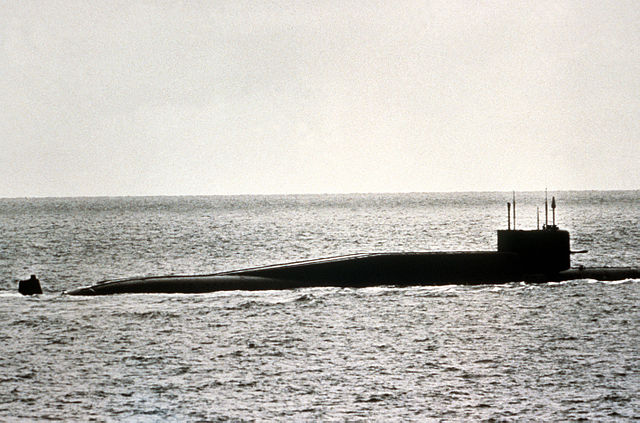
K-92 (hull number 342) was laid down on July 9, 1973, launched May 3, 1975 and completed on December 17, 1975.
She was decommissioned in 1995 and disposed of in 2000.
 K-193
K-193
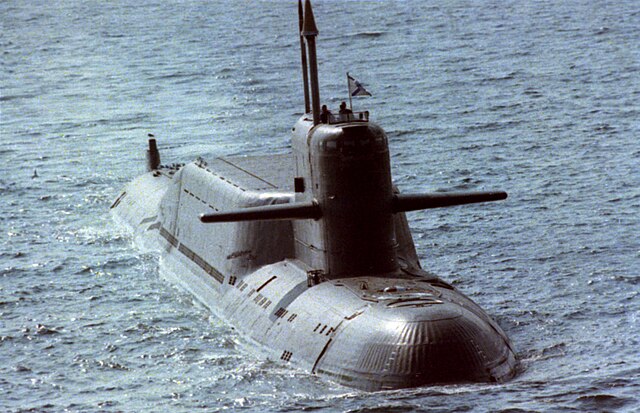
K-193 (renamed 353) was laid down on September 3, 1973, launched July 1, 1975 and commissioned on December 30, 1975. On July 25, 1977, she was reclassified into a missile submarine cruiser, and on June 3, 1992, into a strategic nuclear submarine cruiser. In May-August 1979 she carried out her most extensive, 81-day patrol of her career. She was decommissioned by March 28, 1995, and among the commanders in 1979-1981 were Valery Vasilyevich Chirkov, future vice admiral and commander of the 11th nuclear submarine flotilla of the Northern Fleet. She was Disposed of in 1998.
 K-421
K-421
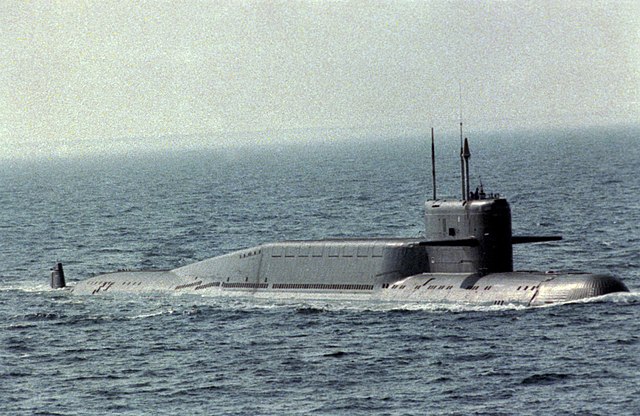
K-421 (renamed 354) was laid down on November 30, 1973, launched July 1, 1975, commissioned on December 30, 1975. She was decommissioned in 1996. Disposed of in 1999
Read More/Src
Books
Ilyin V.E., Kolesnikov A.I. “Russian Submarines: An Illustrated Guide”, Astrel, AST, Moscow, 2002
Berezhnoy S.S. “Nuclear submarines of the USSR and Russian Navy”, MIA, No. 7, 2001
Apalkov Yu.V. “Submarines”, vol. 1, part 1, Galeya Print, St. Petersburg, 2002
Apalkov Yu.V., Mant D.I., Mant S.D. “Domestic sea-based ballistic missiles and their carriers”, Galeya Print, St. Petersburg, 2006
“Domestic submarines. Design and construction”, Central Research Institute named after. acad. A.N. Krylova, St. Petersburg, 2004.
Kuzin V.P., Nikolsky V.I. “USSR Navy 1945-1991”, IMO, St. Petersburg, 1996
Links
deepstorm.ru/
web.archive.org/ ship.bsu.by/
web.archive.org/ ruspodlodka.narod.ru/plarb/667b.htm
russianships.info project_667bd.htm
militaryfactory.com/
premium.globalsecurity.org/
nuke.fas.org/
ru.wikipedia.org/
submarines.narod.ru/
web.archive.org/ 667bd photos photos
NothernFleet/
navypedia.org/

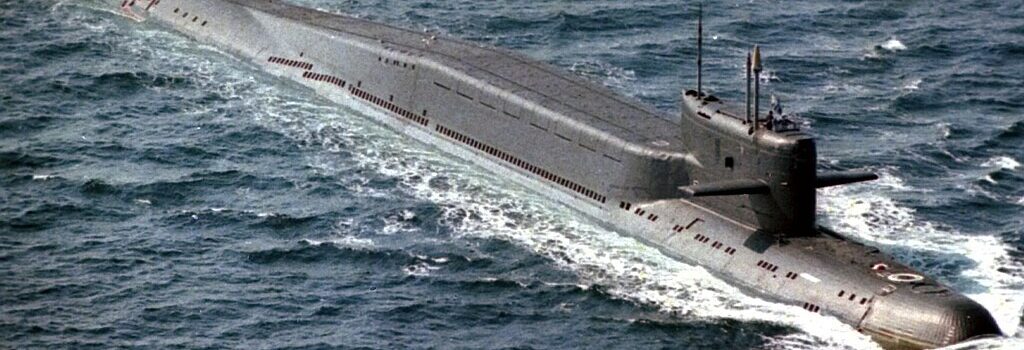


 Latest Facebook Entry -
Latest Facebook Entry -  X(Tweeter) Naval Encyclopedia's deck archive
X(Tweeter) Naval Encyclopedia's deck archive Instagram (@navalencyc)
Instagram (@navalencyc)





 French Navy
French Navy Royal Navy
Royal Navy Russian Navy
Russian Navy Armada Espanola
Armada Espanola Austrian Navy
Austrian Navy K.u.K. Kriegsmarine
K.u.K. Kriegsmarine Dansk Marine
Dansk Marine Nautiko Hellenon
Nautiko Hellenon Koninklije Marine 1870
Koninklije Marine 1870 Marinha do Brasil
Marinha do Brasil Osmanlı Donanması
Osmanlı Donanması Marina Do Peru
Marina Do Peru Marinha do Portugal
Marinha do Portugal Regia Marina 1870
Regia Marina 1870 Nihhon Kaigun 1870
Nihhon Kaigun 1870 Preußische Marine 1870
Preußische Marine 1870 Russkiy Flot 1870
Russkiy Flot 1870 Svenska marinen
Svenska marinen Søværnet
Søværnet Union Navy
Union Navy Confederate Navy
Confederate Navy Armada de Argentina
Armada de Argentina Imperial Chinese Navy
Imperial Chinese Navy Marinha do Portugal
Marinha do Portugal Mexico
Mexico Kaiserliche Marine
Kaiserliche Marine 1898 US Navy
1898 US Navy Sovietskiy Flot
Sovietskiy Flot Royal Canadian Navy
Royal Canadian Navy Royal Australian Navy
Royal Australian Navy RNZN Fleet
RNZN Fleet Chinese Navy 1937
Chinese Navy 1937 Kriegsmarine
Kriegsmarine Chilean Navy
Chilean Navy Danish Navy
Danish Navy Finnish Navy
Finnish Navy Hellenic Navy
Hellenic Navy Polish Navy
Polish Navy Romanian Navy
Romanian Navy Turkish Navy
Turkish Navy Royal Yugoslav Navy
Royal Yugoslav Navy Royal Thai Navy
Royal Thai Navy Minor Navies
Minor Navies Albania
Albania Austria
Austria Belgium
Belgium Columbia
Columbia Costa Rica
Costa Rica Cuba
Cuba Czechoslovakia
Czechoslovakia Dominican Republic
Dominican Republic Haiti
Haiti Hungary
Hungary Honduras
Honduras Estonia
Estonia Iceland
Iceland Eire
Eire Equador
Equador Iran
Iran Iraq
Iraq Latvia
Latvia Liberia
Liberia Lithuania
Lithuania Mandchukuo
Mandchukuo Morocco
Morocco Nicaragua
Nicaragua Persia
Persia San Salvador
San Salvador Sarawak
Sarawak Uruguay
Uruguay Venezuela
Venezuela Zanzibar
Zanzibar Warsaw Pact Navies
Warsaw Pact Navies Bulgaria
Bulgaria Hungary
Hungary

 Bundesmarine
Bundesmarine Dutch Navy
Dutch Navy Hellenic Navy
Hellenic Navy Marina Militare
Marina Militare Yugoslav Navy
Yugoslav Navy Chinese Navy
Chinese Navy Indian Navy
Indian Navy Indonesian Navy
Indonesian Navy JMSDF
JMSDF North Korean Navy
North Korean Navy Pakistani Navy
Pakistani Navy Philippines Navy
Philippines Navy ROKN
ROKN Rep. of Singapore Navy
Rep. of Singapore Navy Taiwanese Navy
Taiwanese Navy IDF Navy
IDF Navy Saudi Navy
Saudi Navy Royal New Zealand Navy
Royal New Zealand Navy Egyptian Navy
Egyptian Navy South African Navy
South African Navy






























 Ukrainian Navy
Ukrainian Navy dbodesign
dbodesign